An exceedingly rare English compound microscope, signed John yarwell Fecit , datable to c.1690, contained in a Continental case. The microscope is made of lignum vitae, pasteboard, gold-tooled leather, and brass. The average height when in use is 34cm. (13½in.) ; the base 10.8cm. (4¼in.) diameter . See Colour Illustrations and Details The body tube is made from two cylinders of pasteboard covered in vellum that slide one in the other, with wooden mounts at either end. The inner cylinder, 6.8cm. (2¾in.) diameter , has plain white vellum on the outside, while on the inside can be seen a sheet of paper with straight lines and numerals in ink, probably waste from accounts. The outer cylinder, 7.4cm. (2 7/8in.) diameter , is covered with vellum dyed green and decorated in three panels with gold tooling ( see below ); the inside is plain vellum. The body tube is fitted with lignum vitae mounts to hold the various lenses that constitute the optics. At the top is a turned unit with a screw cap that covers four sockets to contain a set of objective lens mounts ( one missing ). This unit acts as a screw-on dust excluder over the eye lens, which is in the large mount fixed to the top of the outer body tube. The top of the inner body tube has a wide screw on mount for the field lens, while at the bottom is the long, turned, wooden nosepiece to which an objective mount is screwed. Focusing is by screwing the nosepiece in or out of a hole in a wooden ring at the top of a tripod. Optical Elements (measurements approximate) Eye lens -- 2.4cm. (1in.) diameter , retained by an iron split-ring, biconvex. Focal length -- 3.5cm. (1 5/8in.) . Cannot be dismounted so examination is restricted. Field lens -- 3.8cm. (1½in.) diameter, 0.4cm. thick , threaded retaining ring of wood, biconvex, focal length -- 9cm. (3½in.) , edge of lens most carefully ground, glass virtually colourless, with a faint trace of apple-green. Glass contains a few elongated air bubbles, the longest 0.5mm long. Objective lenses: three out of four remain. They are in carefully turned wooden cells, the sides of which are marked with engraved roman numerals: II, III, IIII (the highest power). Each biconvex lens is held in place by a disc of card with a central hole, giving an aperture of about 3mm. Cannot be dismounted. By selecting the objective and sliding the outer body-tube over the inner, it seems that a magnification of x50 is possible. The case is in the form of a cylinder in two longitudinal parts hinged together, and is made of wood to fit closely the shape of the microscope. It is lined on the inside with rose-coloured chamois leather, and covered on the outside by black leather decorated in panels with blind tooling -- 33cm. (13in.) long; 13cm. (5 1/8in.) diameter . This type of box and tooling are not English. They resemble German work of the early eighteenth century. A study of the decorative gold tooling on microscopes and telescopes (G. Turner, 1966) allows the motifs used on this microscope to be placed in the period 1680-1700. Using the identification numbers from the paper, this Yarwell microscope shows in each of the three panels: 3, 8, 10, 16; at the sides: 21; at the corners: 31; the roll tool for the dog-toothed panel-dividing motif: R1. Additionally, one panel has the Royal Arms, made by two tools (61), the division being down the centre. On books this motif would have been applied by one tool, but on the cylindrical shape of a microscope two parts were necessary. Above the Arms is a lion produced by a single tool (60). There are four telescopes known that are signed by Yarwell all with these motifs: 3, 10, 16, 21, 32 (similar to 31), R1, 60, 61. Yarwell's signature is made using swagged letters in two tools, one for the name and one for ' Fecit '. No microscope with Yarwell's name was known at the time this study was published (1966), or when it was reprinted (1980). Yarwell's trade card, dated 1863, illustrates this type and design of microscope
An exceedingly rare English compound microscope, signed John yarwell Fecit , datable to c.1690, contained in a Continental case. The microscope is made of lignum vitae, pasteboard, gold-tooled leather, and brass. The average height when in use is 34cm. (13½in.) ; the base 10.8cm. (4¼in.) diameter . See Colour Illustrations and Details The body tube is made from two cylinders of pasteboard covered in vellum that slide one in the other, with wooden mounts at either end. The inner cylinder, 6.8cm. (2¾in.) diameter , has plain white vellum on the outside, while on the inside can be seen a sheet of paper with straight lines and numerals in ink, probably waste from accounts. The outer cylinder, 7.4cm. (2 7/8in.) diameter , is covered with vellum dyed green and decorated in three panels with gold tooling ( see below ); the inside is plain vellum. The body tube is fitted with lignum vitae mounts to hold the various lenses that constitute the optics. At the top is a turned unit with a screw cap that covers four sockets to contain a set of objective lens mounts ( one missing ). This unit acts as a screw-on dust excluder over the eye lens, which is in the large mount fixed to the top of the outer body tube. The top of the inner body tube has a wide screw on mount for the field lens, while at the bottom is the long, turned, wooden nosepiece to which an objective mount is screwed. Focusing is by screwing the nosepiece in or out of a hole in a wooden ring at the top of a tripod. Optical Elements (measurements approximate) Eye lens -- 2.4cm. (1in.) diameter , retained by an iron split-ring, biconvex. Focal length -- 3.5cm. (1 5/8in.) . Cannot be dismounted so examination is restricted. Field lens -- 3.8cm. (1½in.) diameter, 0.4cm. thick , threaded retaining ring of wood, biconvex, focal length -- 9cm. (3½in.) , edge of lens most carefully ground, glass virtually colourless, with a faint trace of apple-green. Glass contains a few elongated air bubbles, the longest 0.5mm long. Objective lenses: three out of four remain. They are in carefully turned wooden cells, the sides of which are marked with engraved roman numerals: II, III, IIII (the highest power). Each biconvex lens is held in place by a disc of card with a central hole, giving an aperture of about 3mm. Cannot be dismounted. By selecting the objective and sliding the outer body-tube over the inner, it seems that a magnification of x50 is possible. The case is in the form of a cylinder in two longitudinal parts hinged together, and is made of wood to fit closely the shape of the microscope. It is lined on the inside with rose-coloured chamois leather, and covered on the outside by black leather decorated in panels with blind tooling -- 33cm. (13in.) long; 13cm. (5 1/8in.) diameter . This type of box and tooling are not English. They resemble German work of the early eighteenth century. A study of the decorative gold tooling on microscopes and telescopes (G. Turner, 1966) allows the motifs used on this microscope to be placed in the period 1680-1700. Using the identification numbers from the paper, this Yarwell microscope shows in each of the three panels: 3, 8, 10, 16; at the sides: 21; at the corners: 31; the roll tool for the dog-toothed panel-dividing motif: R1. Additionally, one panel has the Royal Arms, made by two tools (61), the division being down the centre. On books this motif would have been applied by one tool, but on the cylindrical shape of a microscope two parts were necessary. Above the Arms is a lion produced by a single tool (60). There are four telescopes known that are signed by Yarwell all with these motifs: 3, 10, 16, 21, 32 (similar to 31), R1, 60, 61. Yarwell's signature is made using swagged letters in two tools, one for the name and one for ' Fecit '. No microscope with Yarwell's name was known at the time this study was published (1966), or when it was reprinted (1980). Yarwell's trade card, dated 1863, illustrates this type and design of microscope
.jpg)
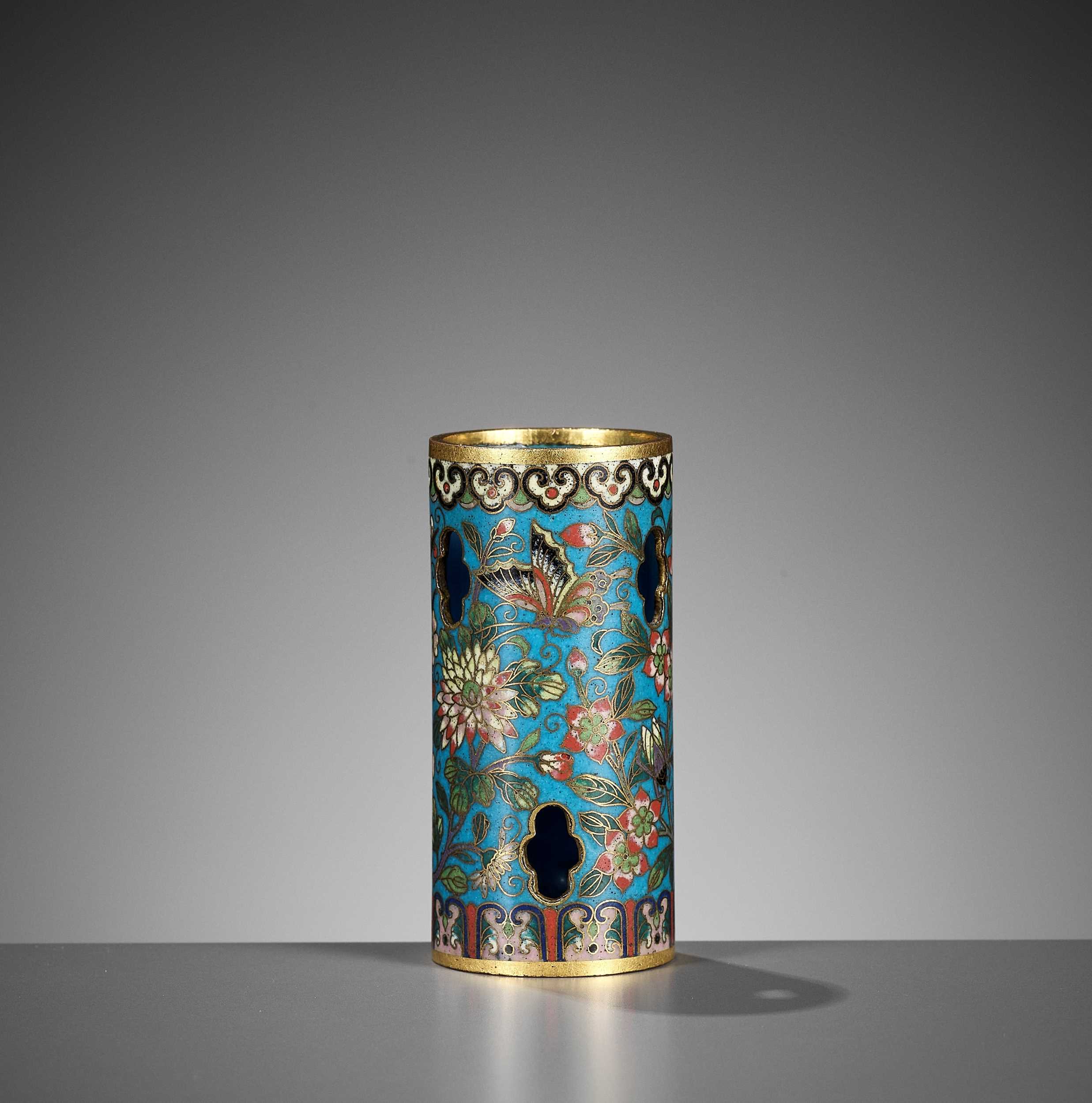

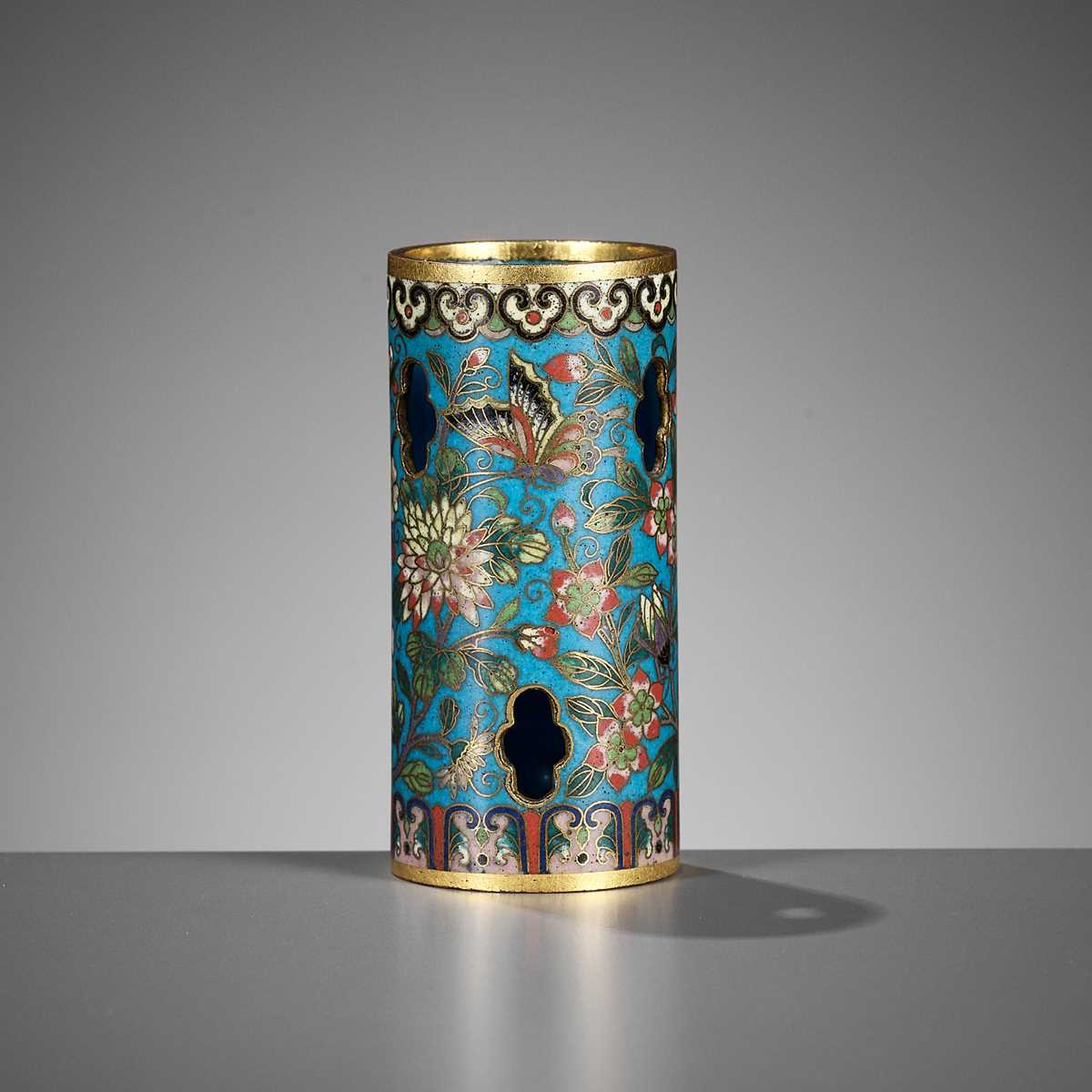


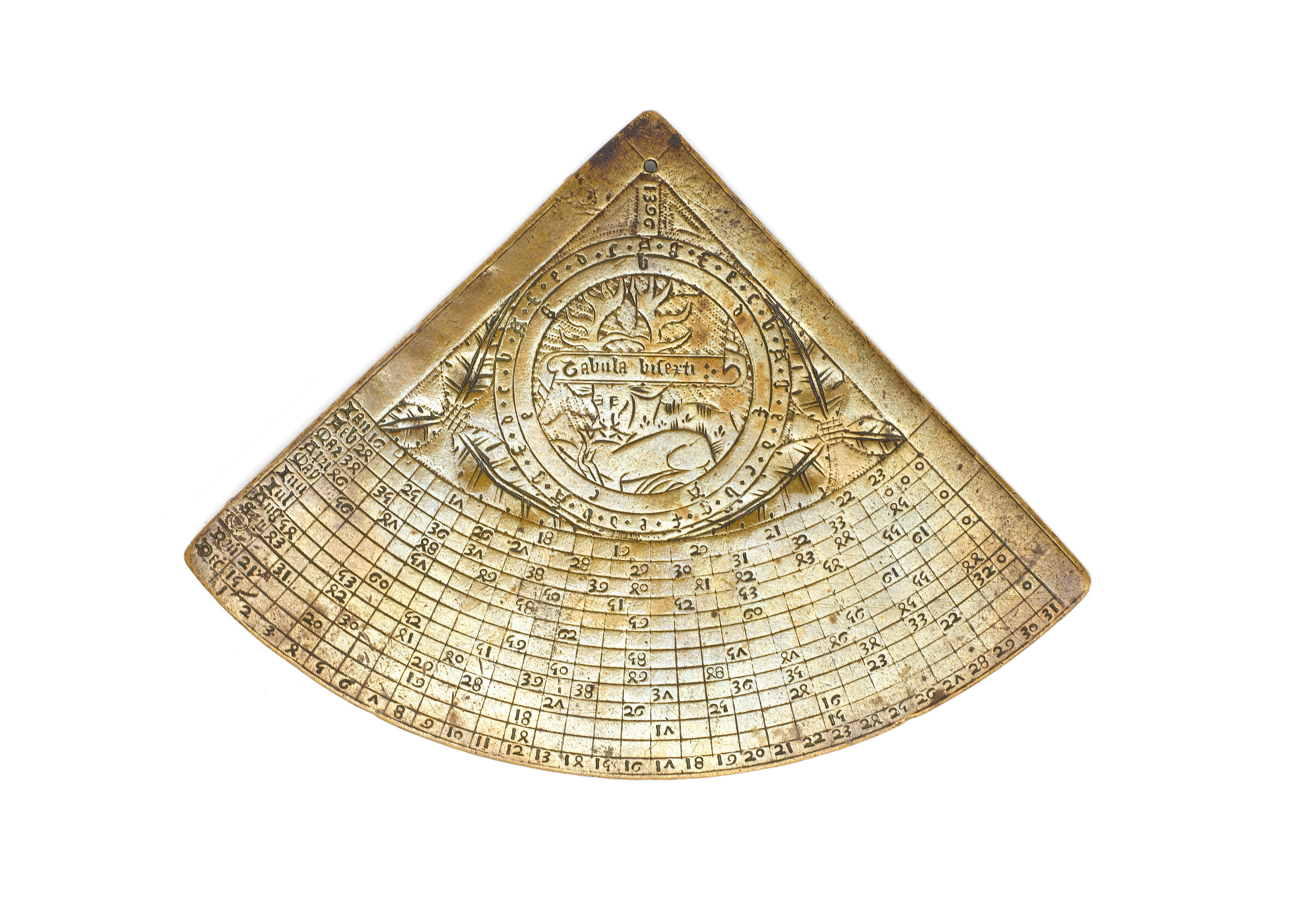




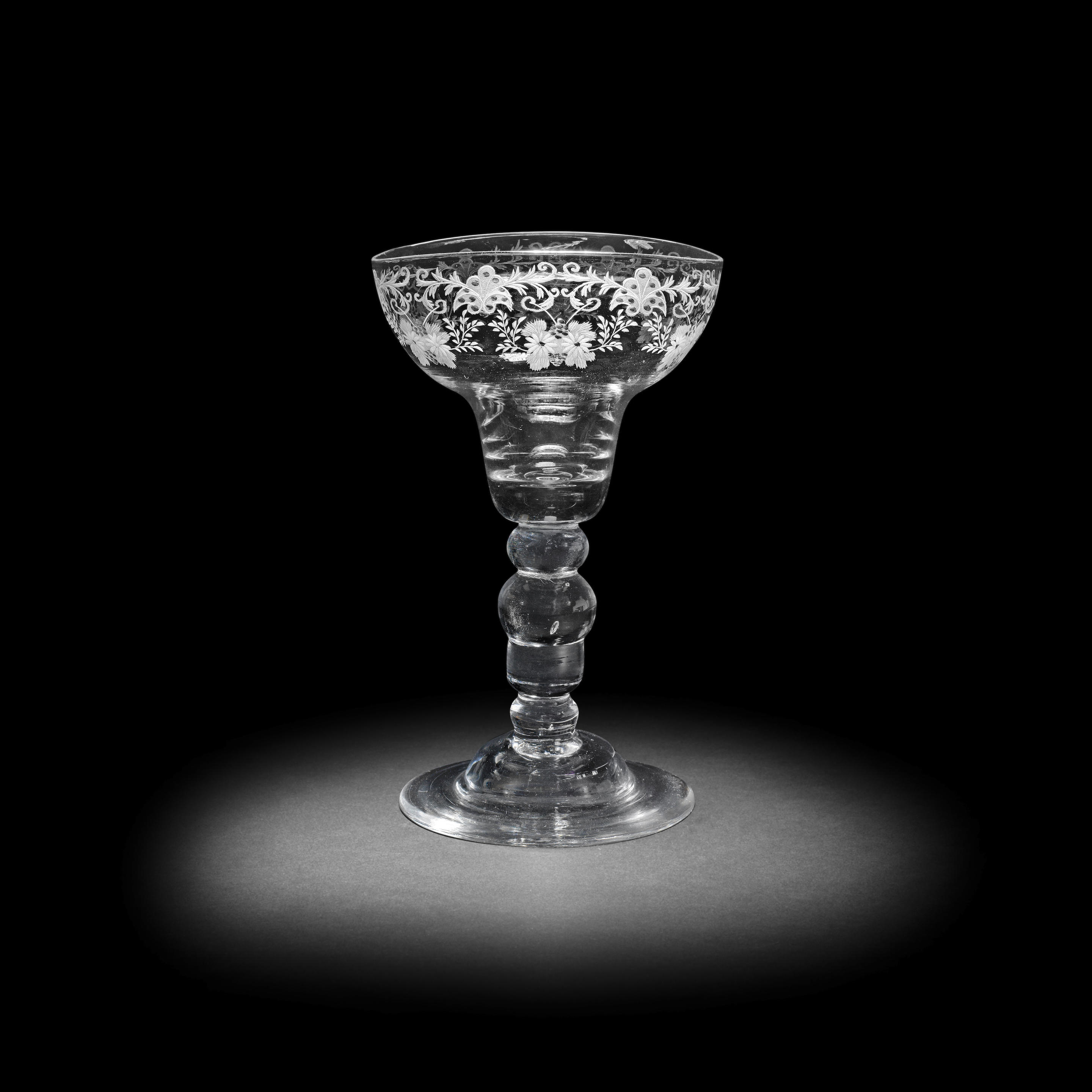
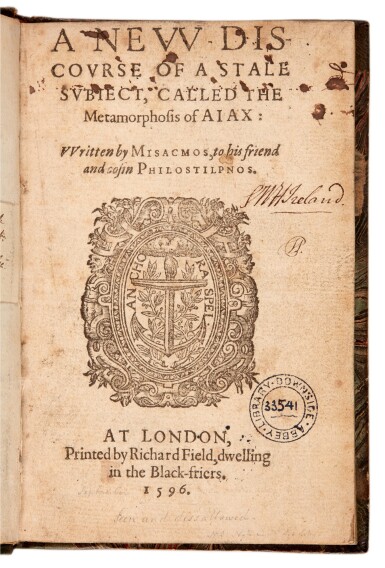
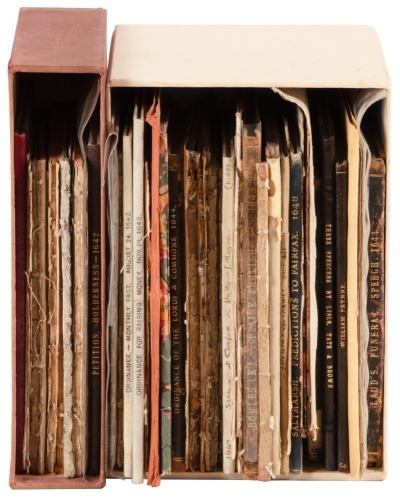

Try LotSearch and its premium features for 7 days - without any costs!
Be notified automatically about new items in upcoming auctions.
Create an alert